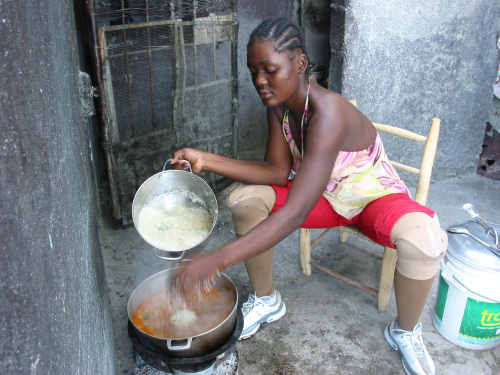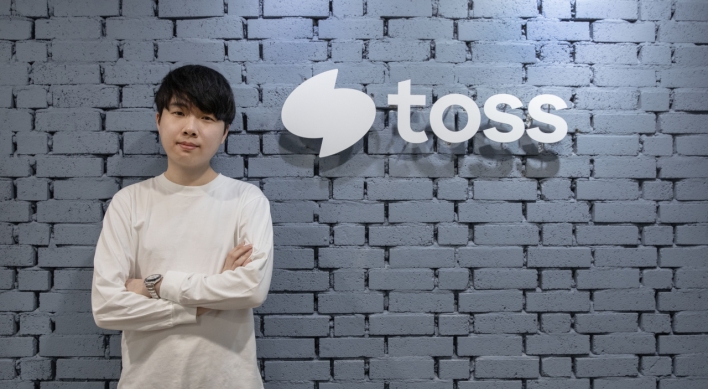PORT-AU-PRINCE, Haiti ― She can climb stairs and hike blocks to a bus stop. The beat-up wheelchair is gone.
Sounlove Zamor, who lost both legs below the knee in Haiti’s earthquake, is walking again.
The young woman, who had been caught in a collapsed house, was fitted with prosthetic legs in Israel after benefactors read about her in the Los Angeles Times. Now she’s back in Haiti and walking on new legs, as called for in the script.
But in Haiti, endings are seldom TV tidy.
For Zamor, now 20, home has meant heartache. Her father died in last year’s earthquake, and her mother can’t look at her without sobbing in sadness.
The Zamor sisters share the home of an aunt who lives in Canada and sends money for food. Although the house isn’t theirs, it’s shelter in a city where hundreds of thousands of people are stuck in squalid tent camps.
Zamor pines for the strangers in Israel who taught her words of Hebrew and how to balance on her new limbs, which start at the knee and end in white running shoes.
“I was praying from the day I got there that I wouldn’t come back to Haiti,” Zamor said, tending a pot of rice and beans over an outdoor charcoal fire.
At Sheba Medical Center near Tel Aviv, Zamor learned to jump rope, practiced walking with a plastic basin perched on her head, got steadier on her limbs. In the end, she begged to stay, but that wasn’t possible.
Haiti is a brutal place for those who can’t walk, with few services for the disabled and wheelchair access a remote afterthought. Zamor’s life will be much different with legs, even prosthetic ones.
Zamor, grateful, knows this. “I can really walk,” she said.
Sounlove Zamor, who lost both legs below the knee in Haiti’s earthquake, is walking again.
The young woman, who had been caught in a collapsed house, was fitted with prosthetic legs in Israel after benefactors read about her in the Los Angeles Times. Now she’s back in Haiti and walking on new legs, as called for in the script.
But in Haiti, endings are seldom TV tidy.
For Zamor, now 20, home has meant heartache. Her father died in last year’s earthquake, and her mother can’t look at her without sobbing in sadness.
The Zamor sisters share the home of an aunt who lives in Canada and sends money for food. Although the house isn’t theirs, it’s shelter in a city where hundreds of thousands of people are stuck in squalid tent camps.
Zamor pines for the strangers in Israel who taught her words of Hebrew and how to balance on her new limbs, which start at the knee and end in white running shoes.
“I was praying from the day I got there that I wouldn’t come back to Haiti,” Zamor said, tending a pot of rice and beans over an outdoor charcoal fire.
At Sheba Medical Center near Tel Aviv, Zamor learned to jump rope, practiced walking with a plastic basin perched on her head, got steadier on her limbs. In the end, she begged to stay, but that wasn’t possible.
Haiti is a brutal place for those who can’t walk, with few services for the disabled and wheelchair access a remote afterthought. Zamor’s life will be much different with legs, even prosthetic ones.
Zamor, grateful, knows this. “I can really walk,” she said.

But where ― that’s the problem. She’s at a loss so far. “I have to have somewhere to go,” she said. “And there’s nothing.”
Zamor said she is embarrassed to rejoin the club in which young women prance like fashion models, a popular pastime in Haiti. She bristles when strangers ask why she wears the sneakers instead of sandals, and fights a creeping dread that another quake is coming to end her for sure.
Zamor, who was in ninth grade when she got hurt, wants to go back to school and has dreams of becoming a lawyer or journalist. But she lacks money to pay for classes and books. The Los Angeles-based group that sponsored her rehabilitation, Friends of Sheba Medical Center, is gathering funds to help, said its executive director, Jack Saltzberg.
“My main goal in interacting with her is that she not take things for granted, and that she will learn that there will be only one person who can really help her, that is herself,” Saltzberg said in an email exchange.
Under a skinny palm tree in Port-au-Prince, Zamor flipped through a pink-covered album of photos from her three-month stay in Israel. It’s a little book full of big smiles. She wore a donated black gown to her farewell party and looked elegant.
On a recent day, Zamor wore stretchy red-and-white sweatpants over the artificial legs, which don’t fit quite right because she has lost weight since she returned to Haiti. She pulls three layers of socks over the ends of her legs to fill them out.
Zamor eased up two flights of stairs, touching a wall for balance. She came back down successfully. Dancing, which has always given her special joy, must wait for another time.
There are days when tears burst through without warning, and Zamor wonders whether it might have been better if she had never left, never imagined a life far from this hard Haitian one.
Barely out of her teens, she is learning to pack dreams and despair in the same satchel.
“I feel grateful. I can visit my mother. That’s a good thing in my life,” Zamor said. The kettle bubbled. She considered. “But what comes after that?”
By Ken Ellingwood
(Los Angeles Times)
(McClatchy-Tribune Information Services)


![[AtoZ into Korean mind] Humor in Korea: Navigating the line between what's funny and not](http://res.heraldm.com/phpwas/restmb_idxmake.php?idx=644&simg=/content/image/2024/04/22/20240422050642_0.jpg&u=)


![[Herald Interview] Why Toss invited hackers to penetrate its system](http://res.heraldm.com/phpwas/restmb_idxmake.php?idx=644&simg=/content/image/2024/04/22/20240422050569_0.jpg&u=20240422150649)
![[Graphic News] 77% of young Koreans still financially dependent](http://res.heraldm.com/phpwas/restmb_idxmake.php?idx=644&simg=/content/image/2024/04/22/20240422050762_0.gif&u=)


![[Exclusive] Korean military set to ban iPhones over 'security' concerns](http://res.heraldm.com/phpwas/restmb_idxmake.php?idx=644&simg=/content/image/2024/04/23/20240423050599_0.jpg&u=20240423171347)




![[Exclusive] Korean military to ban iPhones over security issues](http://res.heraldm.com/phpwas/restmb_idxmake.php?idx=652&simg=/content/image/2024/04/23/20240423050599_0.jpg&u=20240423171347)



![[Today’s K-pop] Ateez confirms US tour details](http://res.heraldm.com/phpwas/restmb_idxmake.php?idx=642&simg=/content/image/2024/04/23/20240423050700_0.jpg&u=)